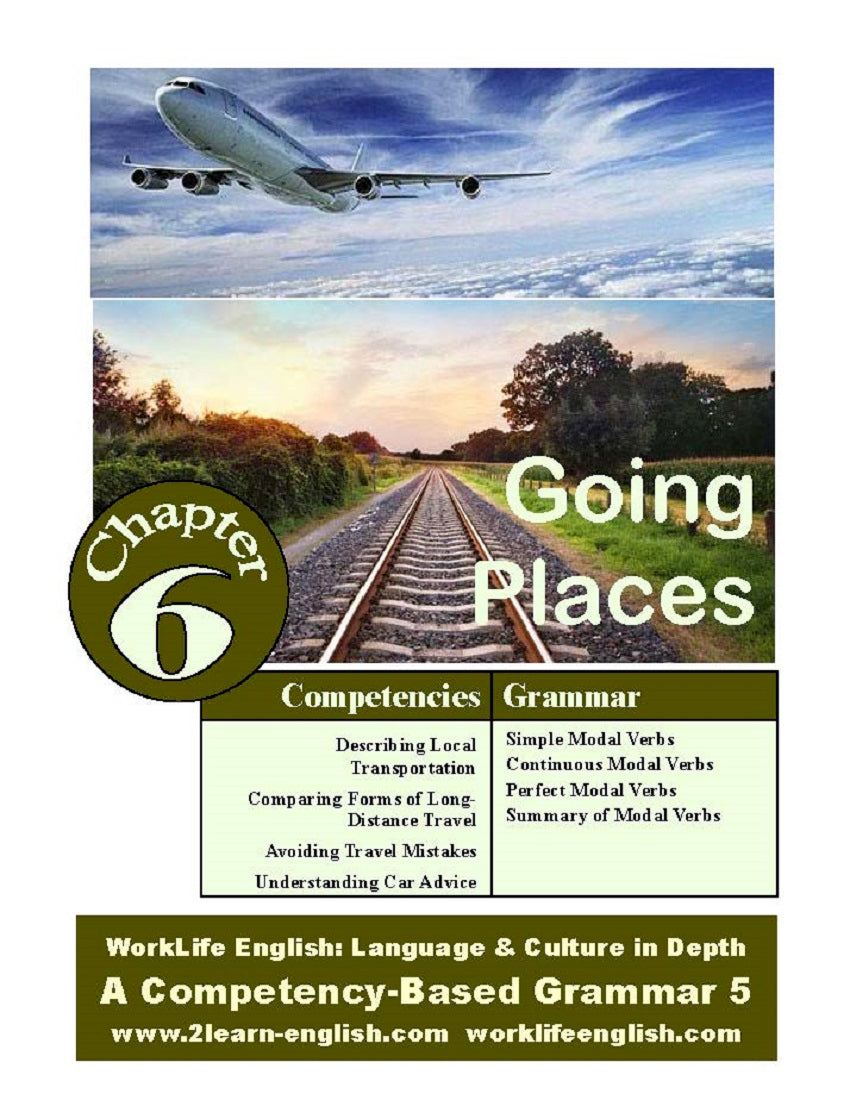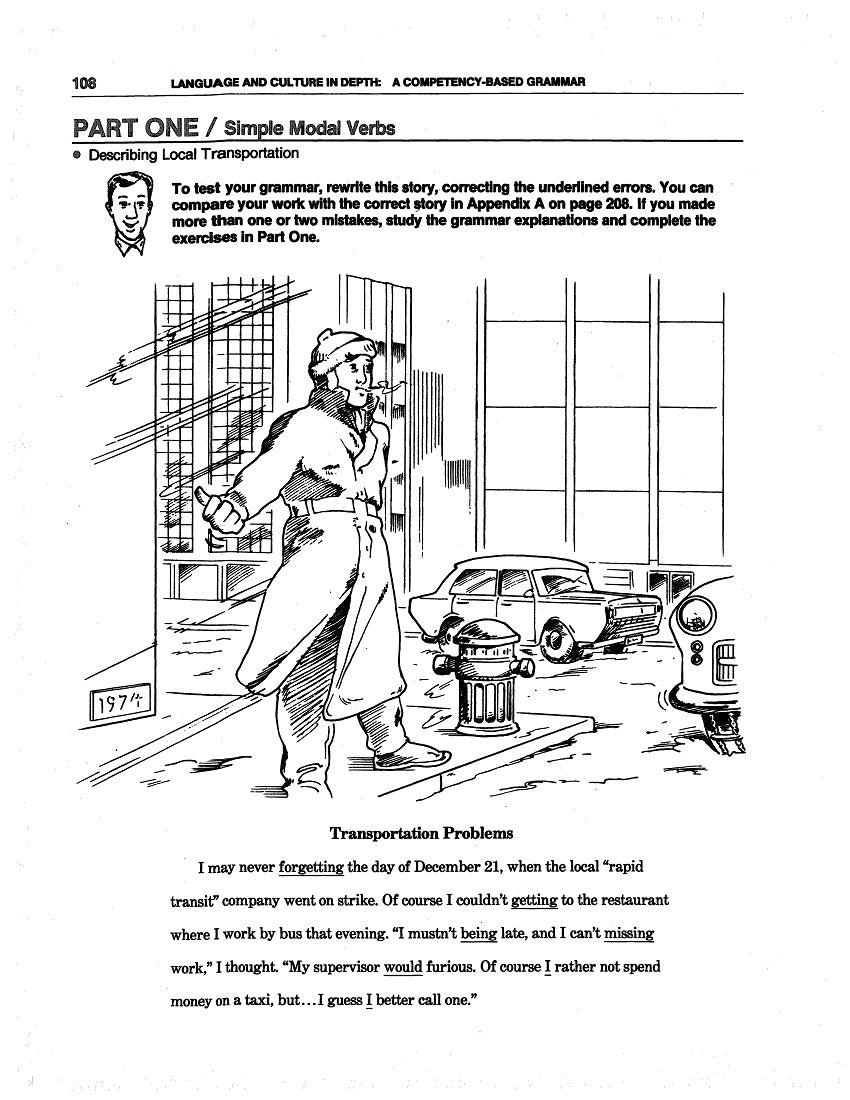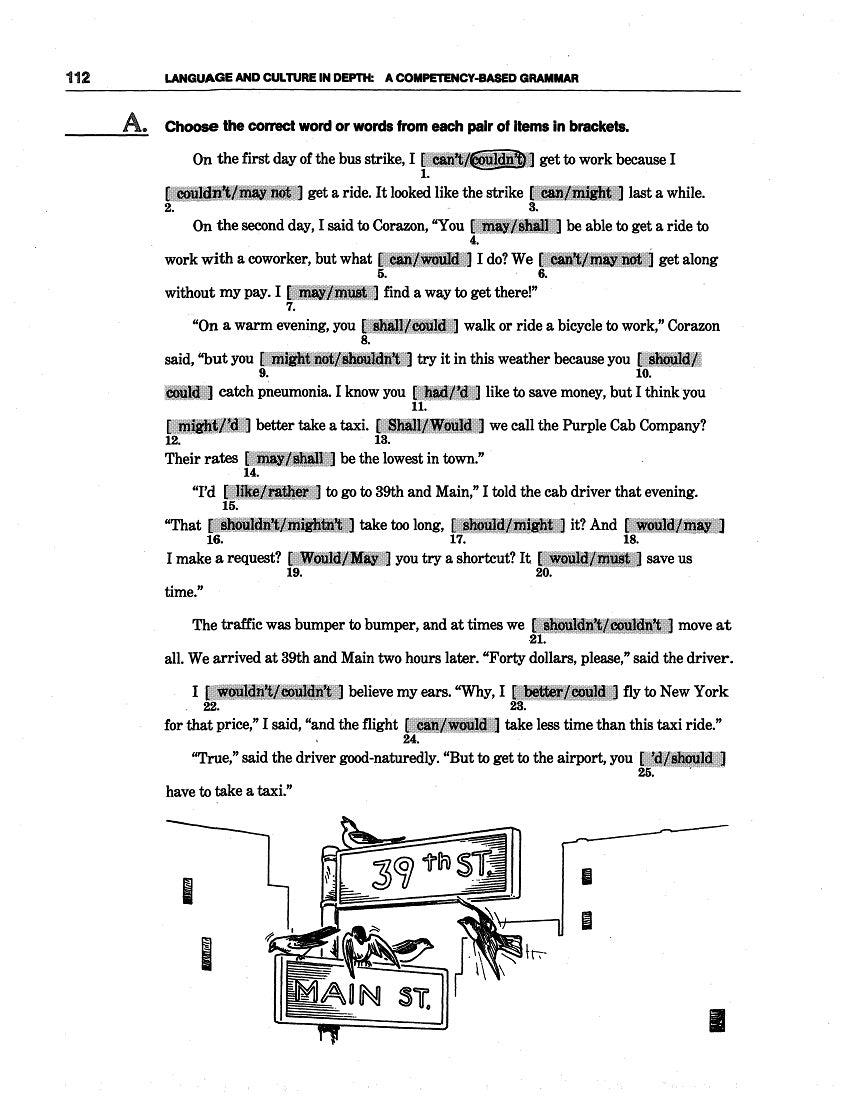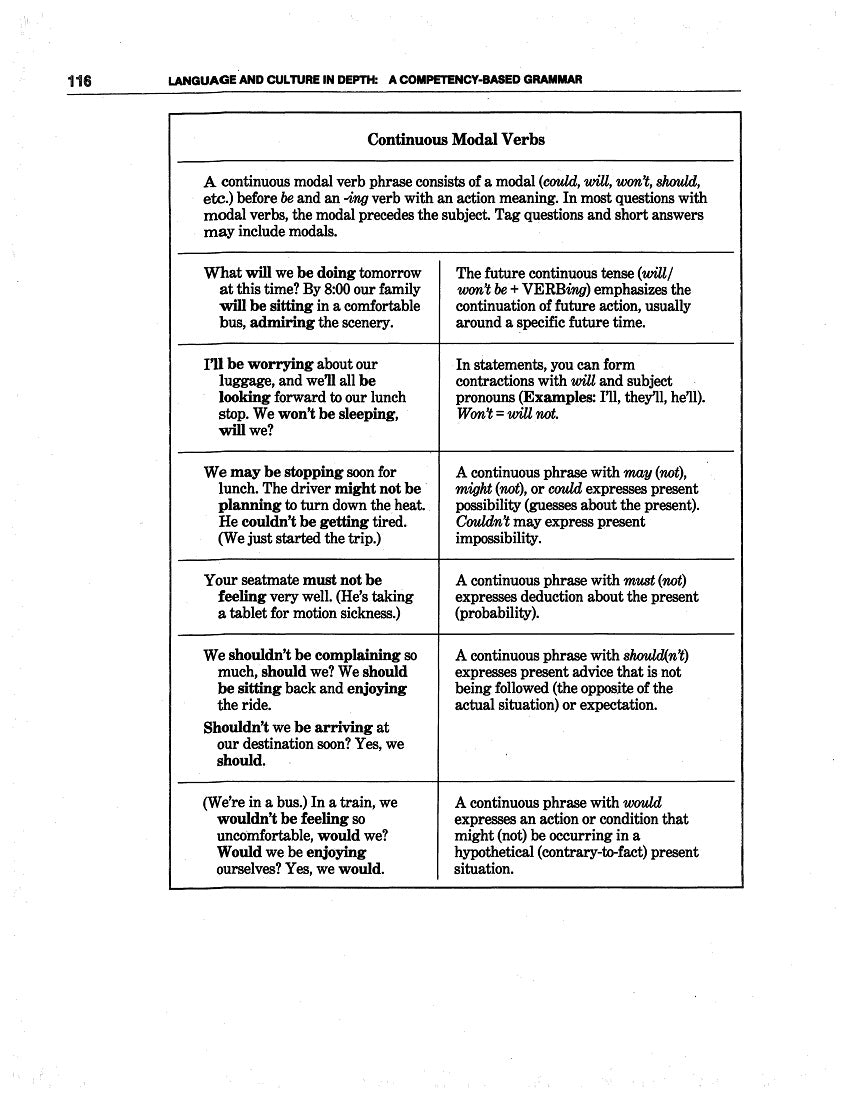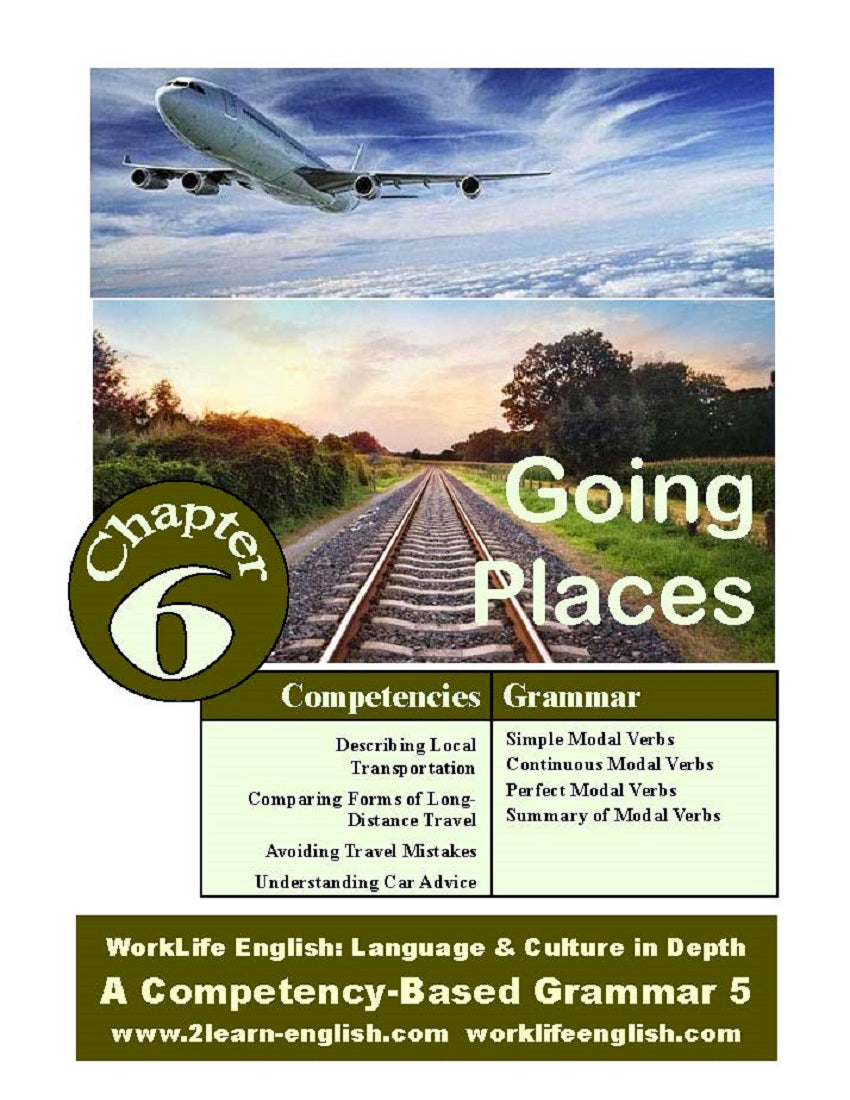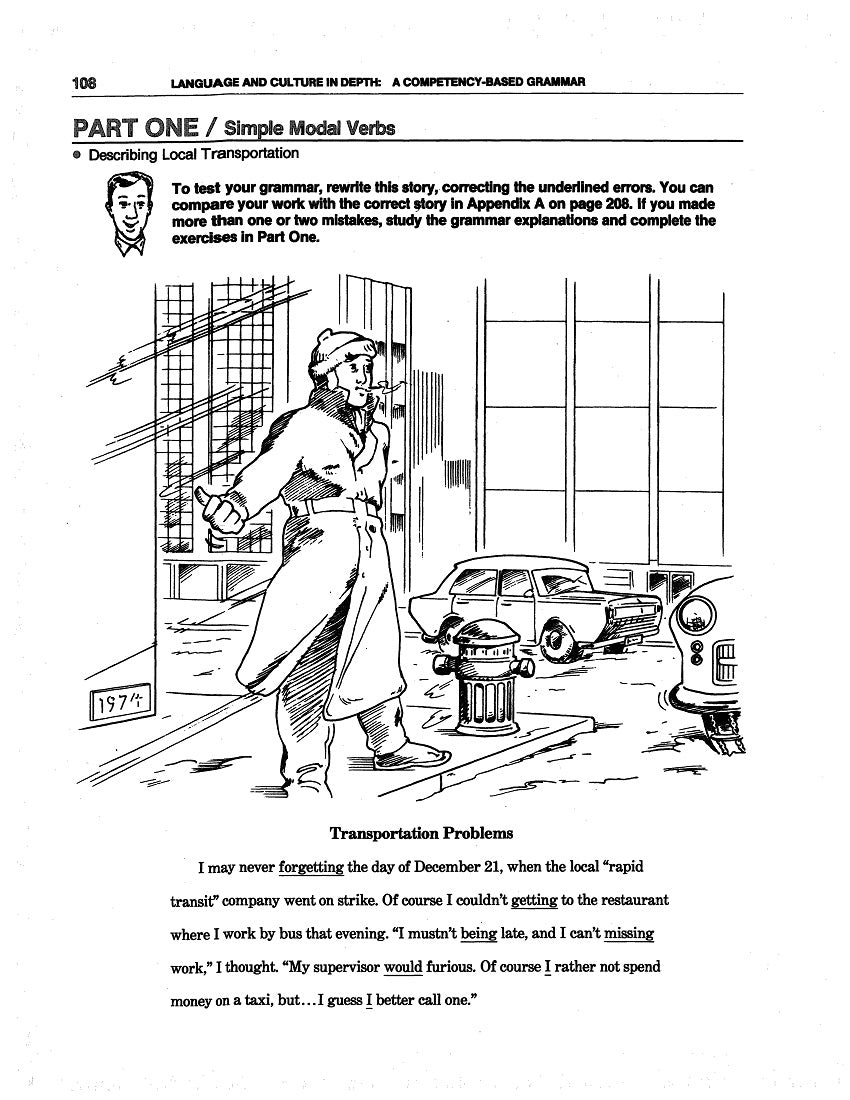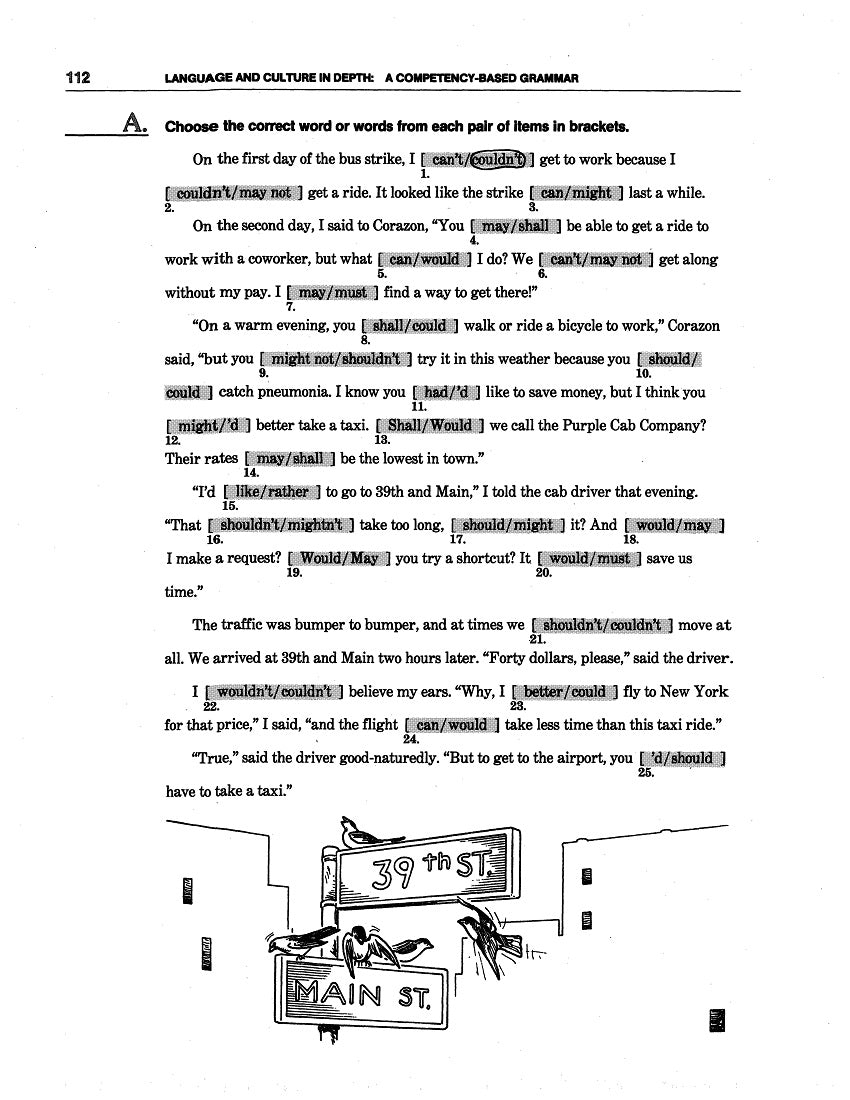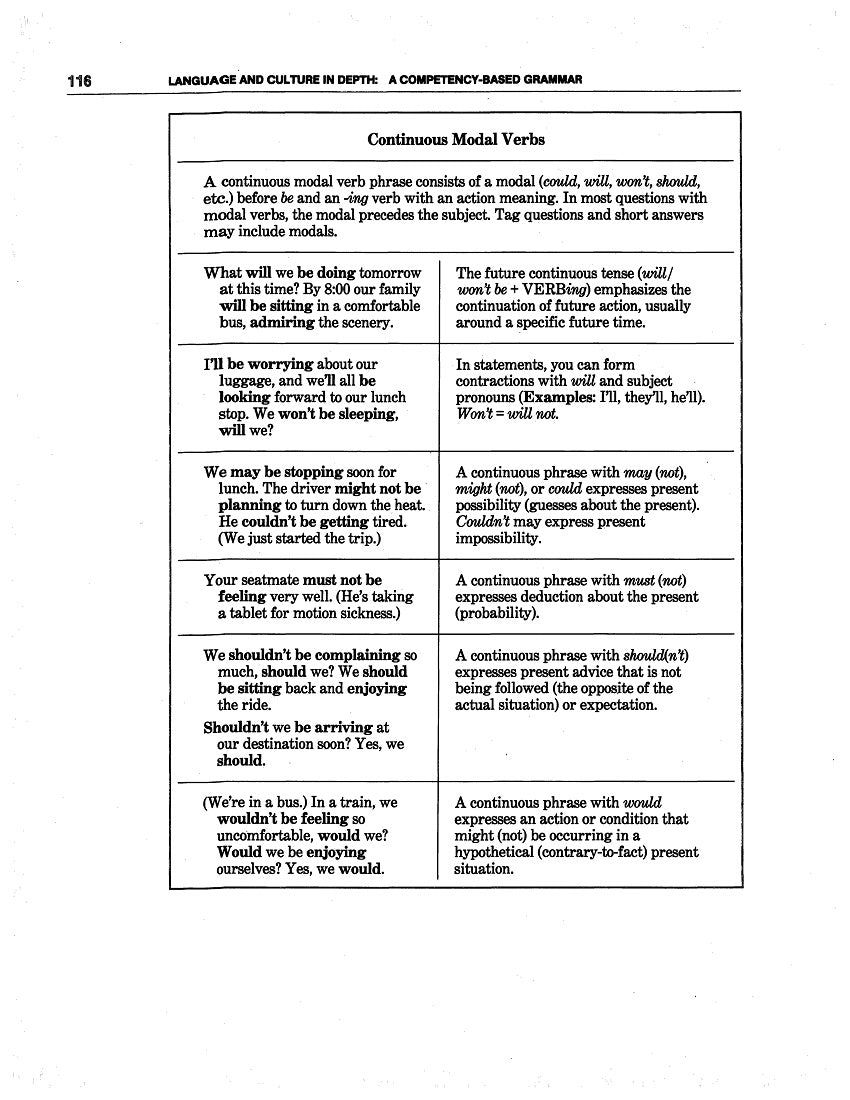1
/
of
4
Work/Life English
D-06.06 Use Simple, Continuous & Perfect Modal-Verb Phrasing
D-06.06 Use Simple, Continuous & Perfect Modal-Verb Phrasing
Regular price
$2.00 USD
Regular price
Sale price
$2.00 USD
Unit price
/
per
Parts One to Four of Chapter 6 (“Going Places”) of WorkLife English Grammar 5: Language & Culture in Depth, pages 107-126
20 pages
Who It’s For: (Self) Teachers & Helpers at (Almost) Advanced Learning Levels
Why It’s Useful: Most modal-verb patterns consist of a modal (can/could, will/would, shall/should, may, might, must, had better) before the base form of another verb without endings. But if the second verb is be before an -ing verb, the phrase can express a guess or prediction about future activity. And if it’s the verb is have before a past participle, the “perfect verb phrase” can refer to completion of future action; past (im)possibility or deduction; past advice that wasn’t taken; or a past hypothetical. Sound complicated? It all comes together in these amusing stories with follow-up pedagogy and practice.
What You’ll Do:
[1] To start Parts One, Two, & Three, first correct the errors in Simple, Continuous, & Perfect Modal-Verb Phrases (respectively) in stories titled “Transportation Problems,” “the Rules of Bus Travel,” and “Air-Travel Mistakes.” After absorbing the pedagogy of each part, choose correct words in Exercise A. Complete sentences in Exercises B (& *C). Then tell your own story; re-correct your version of the original anecdote of that section.
[2] For Part Four on pages 123-128, use the summarizing examples and explanations to help you compare forms, meanings, and uses of a typical sampling of modal-verb phrases. Do the exercises. Go on to incorporate targeted grammatical forms and patterns with your own vocabulary to apply to real-life situations.
Couldn't load pickup availability
